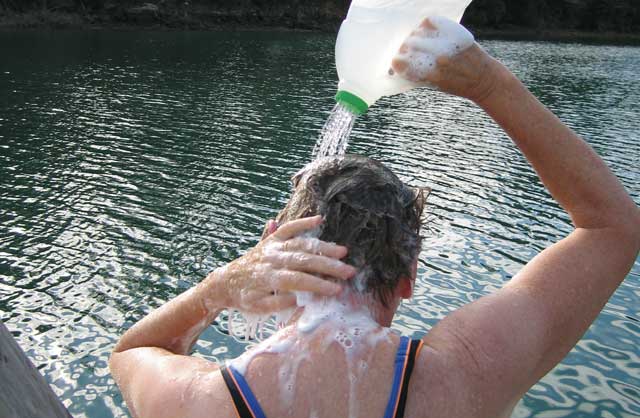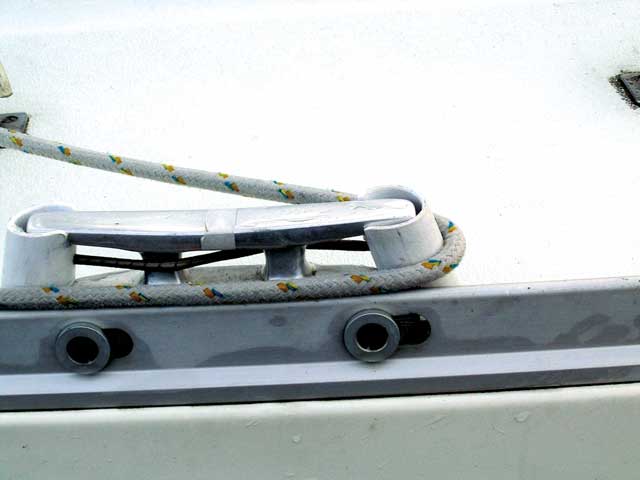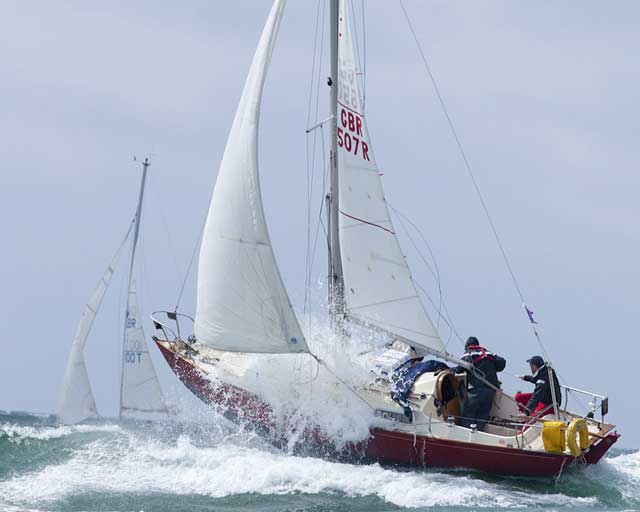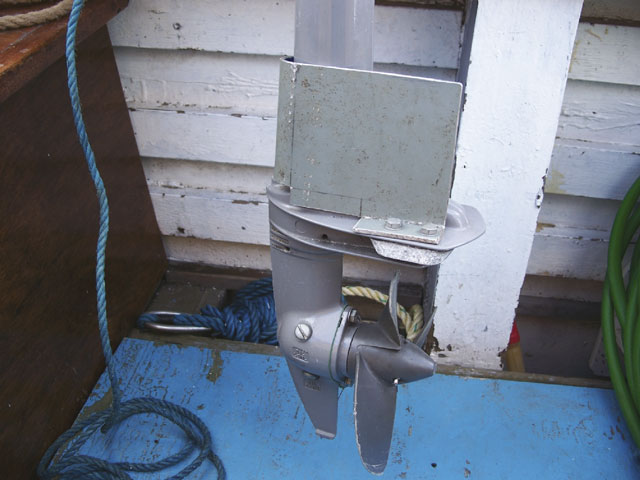Peter Crick makes a gate in his pushpit - which then goes on to save a life!
It all started with a mistake. Keeping our Westerly Griffon on the water all year upsets the batteries because they like to be fed now and again; if not, they sulk and refuse to work. So we installed a small wind charger. We put it on the pushpit – but together with the subsequent additions of GPS, Navtex, lifebelts, danbuoys and the onset of stiffening joints and small grandsons – it was then impossible to board safely from the dinghy via the boarding ladder.
So to tidy things up I made a T-shaped aerial mast, attached to a stanchion base, and clamped to the pushpit. It looked great – but I hadn’t fed the cables through the tubes before fixing it! It took hours of profane effort to get the cables in, using a cord as a puller, and smearing the cables with washing up liquid.
I then cut a gate in the starboard side of the pushpit, in line with the boarding ladder – the hardest bit was the first cut with the hacksaw! There needs to be an overlapping flange to accommodate a drop nose pin that will hold everything secure while the gate is closed. If you hold the horizontals close together while drilling, they will spring apart slightly, holding the pin tight and rattle free. Unfortunately, when the gate is open it leaves that side of the pushpit completely unsupported. So a couple more uprights on stanchion bases are needed in the corners to increase the overall rigidity of the pushpit.
Weld or screw?
There are two ways to construct all these joints. They can be welded, or made with a variety of clamping fixtures held together with grub screws (available from Baseline, Segensworth, Hants, tel: 01489 576349). At first I was going to use their clamps, as it would be cheaper, and I could do it all without any outside help. But eventually I decided on welding, at an extra cost of £125, as it looks neater and is stronger.
My wife now thanks me for it every time she climbs out of the dinghy! But the best endorsement of the design was that we were able to rescue an exhausted swimmer. We just dropped our boarding ladder – which rather conveniently has three rungs below the waterline – then helped him up straight through the opening! He was too exhausted to have stepped over the pushpit, and we discovered later that both his hips had been replaced. A life had been saved.
Send us your practical projects! We pay at least £30 for each one published in the magazine.
Anchor light and emergency VHF antenna
Paul Newton mounts an anchor light and emergency VHF antenna on his pushpit
Simple small boat shower
Rick Allender goes back to basics with a low-cost and simple way to shower on a small boat
Whisker pole from a Laser topmast
The spinnaker pole that came with my Jeanneau SO34.2 is stout and reasonably strong, but is a little short to…
Make your own cleat boots
How to make your own cleat boots
Two uses for Ikea bed slats
Using Ikea bed slats for a comfortable night's sleep - and as a floor for an Avon Dinghy
Holding tank for a small boat
David Witton converts a caravan tank to make a holding tank for his small boat
DIY cutless bearing extractor
Graham Swetman makes his own heavy-duty bearing extractor
Tracing tricky leaks on a boat
Boat leaks are the bane of a sailor’s life, but with patience their source can be traced. Here are some…
Antifouling – how to remember how far you’ve got
It is amazing how crew always seem to disappear when boat maintenance time comes. I always end up painting the…
Adding a rudder to a small outboard
Jim Miller suggests a neat way to add a rudder to a Honda BF2.3 outboard motor to aid steering at…














